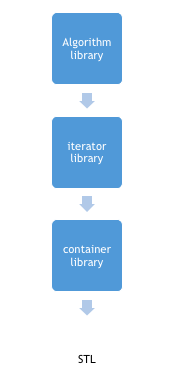What is stl: Are you having perfect knowledge of the C++ Programming Language? If yes, then discussing the STL C++ concepts can be easy and simple to understand by beginners and experienced developers. Also, freshers who are appearing for software developer interviews related to various programming languages can go through STL Tutorials and Interview Questions guide. Here, BTech Geeks have shared entire concept-related interview questions along with some sub-topics of standard template library tutorials.
Readers & learners who are excited to explore more about STL Tutorials & Interview Questions can get into the further sections and start learning the most important topics of the standard template library(STL). Move ahead and know the definition of STL and its components. Firstly, take a look at the available links of Interview Questions on STL Tutorials and ace up your preparation.
- Standard Template Library Interview Questions and Tutorials
- What is STL?
- Components of Standard Template Library (STL)
- Architecture of STL
- C++: STL Containers
- STL Vector Example Program
- Use and Application of STL
Standard Template Library Interview Questions and Tutorials
In the below modules, you will find a complete list of tutorials and interview questions on STL C++ Programming. This list of STL Tutorials aid beginners to learn the basic to advanced topics of the standard template library C++ efficiently.
Vector Interview Questions and Tutorials
- What’s std::vector and why should I use std::vector?
- 5 Different ways to Initialize a vector
- How to Iterate or Loop over a Vector?
- How to Iterate over a Vector in Reverse Order ( Backward direction )
- How does std::vector works internally ?
- How to fill a vector with random numbers in C++
- Importance of Constructors while using User Defined Objects with std::vector
- How to use vector efficiently in C++?
- std::vector and Iterator Invalidation
- Remove all occurences of an element from vector in O(n) complexity
- Be careful with hidden cost of std::vector for user defined objects
- Add elements in vector using vector::push_back
- How to Print all elements of a vector in C++
- How to initialize two dimensional Vector in C++ – (Initializing 2D Vectors / Matrix)
- How to print Two Dimensional (2D) Vector in C++ ?
- C++: Convert Array to Vector (7 Ways)
- C++: Convert vector to array (4 Ways)
- C++: Convert Set to Vector
- C++: Convert Vector to Set ( 5 Ways )
- C++: Print a vector in reverse order (5 Ways)
- Vector Interview Questions
- Interview Questions On Stl In C++
- Stl Interview Questions For Experienced
- C++ Stl Interview Questions For Experienced
Deque Interview Questions and Tutorials
List Interview Questions and Tutorials
- std::list Tutorial and Usage Details
- Vector vs List
- Different Ways To Initialize a List
- Erase elements from List using Iterators
- Removing elements from a List based on Criterion
- Remove Elements from a List while Iterating
- How to get element by index in List ?
- How to search an element in std::list ?
Set Interview Questions and Tutorials
- Set usage details with default sorting criteria
- Using std::set with user defined classes
- std::set and external Sorting criteria | Comparator
- How to access an element by index in Set
- Different ways to insert elements in Set
- How to Iterate over a Set in C++
- Removing an element from Set using different techniques.
- Erase elements while Iterating over Set & Generic erase_if()
Map Interview Questions and Tutorials
- std::map Tutorial Part 1: Usage Detail with examples
- std::map Tutorial -Part 2: std::map and External Sorting Criteria / Comparator
- std::map Tutorial – Part 3: Using User defined class objects as keys in std::map
- Set vs Map : How to choose a right associative container ?
- How to Insert elements in a map
- How to Iterate over a map in C++
- Map Insert Example
- Iterate a map in reverse order
- Check if a key exists in a Map
- Search by value in a Map
- C++ Map : Erase by Key | Iterators
- C++ Map : Operator []
- C++ Map : Erase by Value or callback
- Using STL to verify brackets or parentheses combination in an expression
Unordered_map Interview Questions and Tutorials
- Basic Usage Detail and Example
- Initializing an unordered_map
- Searching in unordered_map
- Insert elements in unordered_map
- Erasing an element
- Erase elements while iterating
- std::map vs std::unordered_map
Unordered_set Interview Questions and Tutorials
- Unordered_set Basic Example
- Initializing an unordered_set
- Inserting elements in an unordered_set
- Searching an element in unordered_set
- Unordered_set – Custom Hasher & Comparator
- Unordered_set & User defined classes
STL Algorithm Interview Questions and Tutorials
- Using std::find & std::find_if with User Defined Classes
- Iterating over a range of User Defined objects and calling member function using std::for_each
- std::for_each Tutorial: Usage Details with Examples
- Stl In C++
- Questions On Stl In C++
- Stl Interview Questions For Experienced Pdf
- C++ Stl Interview Questions
- Stl Interview Questions
- C++ Stl Questions
- C++ Stl Pdf
- Stl Questions C++
What is STL?
STL stands for Standard Template Library which is a pack of C++ template classes that provides general-purpose classes and functions with templates that are used to execute programming data structures and functions/algorithms like doubly linked lists (list), paired arrays (map), expandable arrays (vector), large string storage, and manipulation (rope), etc.
Do Refer Related Articles:
- Software Design Patterns
- C++11 Multithreading Tutorial
- C++11 Tutorial
- Stl C++ Interview Questions
- Stl In C++ Interview Questions
- Questions On Stl In C++
- Stl Interview Questions In C++
Components of Standard Template Library (STL)
Standard Template Library (STL) is mainly included in three components. They are as follows:
- Algorithms
- Containers
- Iterators
Now, we will see about all these three components of the STL C++ with a neat description that helps you understand very clearly.
| Sr.No | Component & Description |
|---|---|
| 1 | Containers: Containers are utilized to handle collections of objects of a certain kind. There are numerous types of containers such as deque, list, vector, map, etc. |
| 2 | Algorithms: Algorithms act on containers. They provide the means by which you will execute the initialization, sorting, searching, and transforming of the contents of containers. |
| 3 | Iterators: Iterators are applied to step through the elements of collections of objects. These collections may be containers or subsets of containers. |
Architecture of STL
The following image shows the hierarchy of the standard template library(STL). Just take a look at it before you start learning each component of STL.

C++: STL Containers
In STL, the library of containers accommodates containers that are utilized for building data structures such as Linked list, trees, arrays, etc.
Basically, these containers are general, they can maintain elements of any datatype. For instance, dynamic arrays of char, integer, float, and other types are created by Vector.
| Container | Description | Header file | iterator |
|---|---|---|---|
| vector | vector is a class that creates a dynamic array allowing insertions and deletions at the back. | <vector> | Random access |
| list | The list is the sequence containers that allow the insertions and deletions from anywhere. | <list> | Bidirectional |
| deque | deque is the double-ended queue that allows the insertion and deletion from both ends. | <deque> | Random access |
| set | set is an associate container for storing unique sets. | <set> | Bidirectional |
| multiset | A multiset is an associate container for storing non- unique sets. | <set> | Bidirectional |
| map | The map is an associate container for storing unique key-value pairs, i.e. each key is associated with only one value(one-to-one mapping). | <map> | Bidirectional |
| multimap | multimap is an associate container for storing key-value pairs, and each key can be associated with more than one value. | <map> | Bidirectional |
| stack | It follows last in first out(LIFO). | <stack> | No iterator |
| queue | It follows first in first out(FIFO). | <queue> | No iterator |
| Priority-queue | The first element out is always the highest priority element. | <queue> | No iterator |
STL Vector Example Program
#include <iostream>
#include <vector>
using namespace std;
int main() {
// create a vector to store int
vector<int> vec;
int i;
// display the original size of vec
cout << "vector size = " << vec.size() << endl;
// push 5 values into the vector
for(i = 0; i < 5; i++) {
vec.push_back(i);
}
// display extended size of vec
cout << "extended vector size = " << vec.size() << endl;
// access 5 values from the vector
for(i = 0; i < 5; i++) {
cout << "value of vec [" << i << "] = " << vec[i] << endl;
}
// use iterator to access the values
vector<int>::iterator v = vec.begin();
while( v != vec.end()) {
cout << "value of v = " << *v << endl;
v++;
}
return 0;
}
Result:
vector size = 0 extended vector size = 5 value of vec [0] = 0 value of vec [1] = 1 value of vec [2] = 2 value of vec [3] = 3 value of vec [4] = 4 value of v = 0 value of v = 1 value of v = 2 value of v = 3 value of v = 4
Use and Application of STL
- A common library that allows containers and algorithm are called it STL and stores and manipulate various types of data. So, it protects us from determining these data structures & algorithms from the scratch.
- Due to the STL, presently we don’t need to determine our sort function every time we make a distinct program or determine the same function twice for the various data types, rather we can simply utilize the generic container and algorithms in STL.
- Also, it helps in saving more time, code, and effort while programming, therefore STL is gradually utilized in competitive programming, and moreover, it is reliable and fast.
Practice these:
- What Is Stl?
- Can We Use Stl In Coding Interviews
- Is Stl Allowed In Interview
- From Which Stl We Can Insert/Remove Data From Anywhere?
- Cpp Interview Questions For Freshers
- Stl Practice Questions

